


A shrink tunnel or heat tunnel is a heated tunnel mounted over or around a conveyor system. Items (such as packaging) have shrink film loosely applied; with heat, the film shrinks to fit snugly around the wrapped object. [1]



A shrink tunnel or heat tunnel is a heated tunnel mounted over or around a conveyor system. Items (such as packaging) have shrink film loosely applied; with heat, the film shrinks to fit snugly around the wrapped object. [1]
Several types of shrink tunnels are available. [3] [4] [5] The heat source can be based on heating element (electrical resistance), infrared heater, steam, or gas flame. Often forced air is used to improve convection, sometimes focusing the heat on one component of the item.
Tunnels are available with or without a conveyor system. Some are built into a production line or are integral with machinery that also applies the shrink film. Others are movable by hand or by castors. A shrink tunnel, referred to as an oven, may be equipped with an integrated conveyor of two different kinds: the roller conveyor or the belt conveyor. Roller conveyors can be used with polyolefin, PVC, and shrink polyethylene films. The space in between the rollers is filled with hot air from the bottom of the tunnel to shrink the film layer around the object, creating a sealed package. When used with polyolefin and PVC based films the rollers are called "live" or spinning. When used with polyethylene films the rollers are called "dead" or not spinning. The tunnels with Teflon mesh belts and polymer mesh belts are used for smaller packages, or when the package may have an instability and need a stable platform.
Some heat shrink tunnels have two or more zones for heating and controlled cooling.
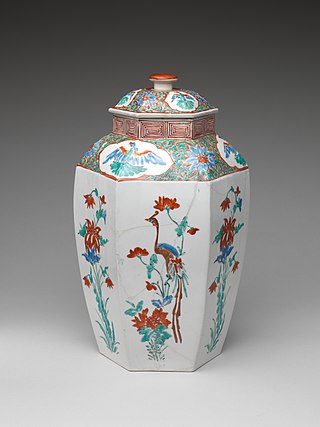
A jar is a rigid, cylindrical or slightly conical container, typically made of glass, ceramic, or plastic, with a wide mouth or opening that can be closed with a lid, screw cap, lug cap, cork stopper, roll-on cap, crimp-on cap, press-on cap, plastic shrink, heat sealed lidding film, an inner seal, a tamper-evident band, or other suitable means. The English word "jar" originates from the Arabic word jarra, which means an earthen pot or vessel.

A closure is a device used to close or seal a container such as a bottle, jug, jar, tube, or can. A closure may be a cap, cover, lid, plug, liner, or the like. The part of the container to which the closure is applied is called the finish.

Shrink wrap, also shrink film, is a material made up of polymer plastic film. When heat is applied, it shrinks tightly over whatever it is covering. Heat can be applied with a handheld heat gun, or the product and film can pass through a heat tunnel on a conveyor.

A heat sealer is a machine used to seal products, packaging, and other thermoplastic materials using heat. This can be with uniform thermoplastic monolayers or with materials having several layers, at least one being thermoplastic. Heat sealing can join two similar materials together or can join dissimilar materials, one of which has a thermoplastic layer.

A blister pack is any of several types of pre-formed plastic packaging used for small consumer goods, foods, and for pharmaceuticals.
Skin pack, or skin packaging, is a type of carded packaging where a product is placed on a piece of paperboard or in trays, and a thin sheet of transparent plastic is placed over the product and paperboard or trays. The printed paperboard/tray usually has a heat-seal coating. The plastic film is softened by heat and draped over the product on the card/tray. Vacuum is used to assist a firm fit. The film bonds to the heat-seal coating on the paperboard.
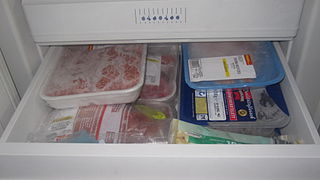
An overwrap or wrap is a method of sealing a contained product, typically as part of retail packaging. It is often made of plastic film or paper. The wrap is applied over the bare product or can be applied over another form of packaging. It is typically used to protect products, but can be used decoratively.

Induction sealing is the process of bonding thermoplastic materials by induction heating. This involves controlled heating an electrically conducting object by electromagnetic induction, through heat generated in the object by eddy currents.

Vacuum packing is a method of packaging that removes air from the package prior to sealing. This method involves placing items in a plastic film package, removing air from inside and sealing the package. Shrink film is sometimes used to have a tight fit to the contents. The intent of vacuum packing is usually to remove oxygen from the container to extend the shelf life of foods and, with flexible package forms, to reduce the volume of the contents and package.

Stretch wrap or stretch film, sometimes known as pallet wrap, is a highly stretchable plastic film that is wrapped around items. The elastic recovery keeps the items tightly bound. In contrast, shrink wrap is applied loosely around an item and shrinks tightly with heat. While it is similar to plastic food wrap, it is not usually made of material rated as safe for food contact.
Metallised films are polymer films coated with a thin layer of metal, usually aluminium. They offer the glossy metallic appearance of an aluminium foil at a reduced weight and cost. Metallised films are widely used for decorative purposes and food packaging, and also for specialty applications including insulation and electronics.
Extrusion coating is the coating of a molten web of synthetic resin onto a substrate material. It is a versatile coating technique used for the economic application of various plastics, notably polyethylene, onto paperboard, corrugated fiberboard, paper, aluminium foils, cellulose, Non-wovens, or plastic films.
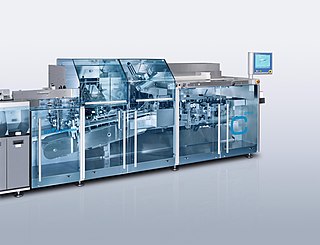
A cartoning machine or cartoner, is a packaging machine that forms cartons: erect, close, folded, side seamed and sealed cartons.
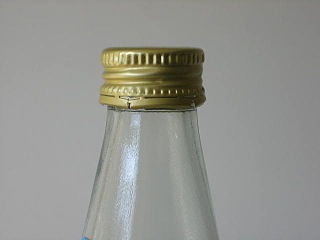
A tamper-evident band or security ring serves as a tamper resistant or tamper evident function to a screw cap, lid, or closure. The term tamper-proof is sometimes used but is considered a misnomer given that pilfering is still technically possible.

Plastic film is a thin continuous polymeric material. Thicker plastic material is often called a "sheet". These thin plastic membranes are used to separate areas or volumes, to hold items, to act as barriers, or as printable surfaces.

A multi-pack also known as multipack is packaging that combines or holds multiple items or smaller packages.

A clamshell is a one-piece container consisting of two halves joined by a hinge area which allows the structure to come together to close. Clamshells can be made to be reusable and reclosable or can be sealed securely.

Packaging machinery is used throughout all packaging operations, involving primary packages to distribution packs. This includes many packaging processes: fabrication, cleaning, filling, sealing, combining, labeling, overwrapping, palletizing.

Security tape is a type of adhesive tape used to help reduce shipping losses due to pilfering and theft. It helps reduce tampering or product adulteration. Often it is a pressure sensitive tape or label with special tamper resistant or tamper evident features. It can be used as a ‘’security seal’’ in addition to a container closure or can be used as a security label. They are sometimes used as or with authentication products and can be an anti-pilferage seal.
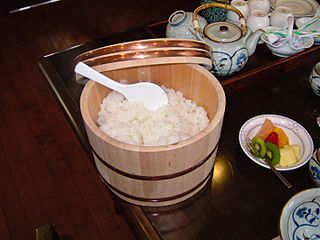
.